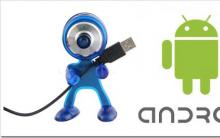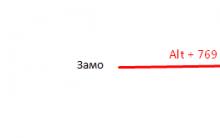Debian 8 Jessie has recently been released. This is a fairly popular distribution at the present time, I myself often use it for various purposes. I have an opportunity . We're going to do a clean install.
We will install a 64-bit version of Debian 8 Jessie from a minimal image called debian-8.0.0-amd64-netinst. You can get it from the debian.org site. For a successful installation, the server will need Internet access during the installation process. We insert the disk into the system and boot from it. We are greeted by a boot menu with various options:
- Install
- Graphical install
- Advanced options
- Install with speech synthesis
The first option is installation using a text installer, the second is a graphical one. We will install using the graphical installer. But if for some reason it does not start the graphical installer, it happens, then try installing in text mode.
We indicate the location:
Choosing a keyboard layout. Personally, I prefer when I have the default English layout. It's more comfortable for me. If you like working with Russian more, choose Russian:
Next is connecting the disk and loading components for installation, then automatic network configuration via dhcp, if possible. I have a dhcp server on my network, so at this point I don't need to specify the network settings. You have to wait for a while. Then we specify the server name:
You can specify anything you like as a domain on the local network. If the debian server will serve services located on the Internet, specify the real Internet domain. I have a test server, so I specify the local domain:
At the next stage of the installation, we specify the password for the root superuser:
Add a regular user to the installed system and specify a password for him:
Indicate your time zone:
Next, the process of initializing the disks begins. We wait a few seconds and see the disk partitioning menu. I choose the first option. If you do not understand what is at stake, then also choose the first one. If you know what LVM is and you really need it, choose the second item. If someone wants to partition the disk manually, then he no longer needs advice, he himself must understand what and why he is doing.
We indicate the drive on which we will install Debian. If you have only one, then there is nothing to choose from, and we indicate it:
Now you need to specify the partitioning of the disk. In general, the first option with one section will do. I myself have not bothered lately and use one section for the system. Depending on the number of disks and the functionality that the server will serve, the breakdown may be different. If you do not understand how and why you need to partition a disk, then do not bother. When you need it, then you will think about how to partition the disks. For example, if you need to encrypt some section, or use a drbd mirror, then you will need to use a separate section for these purposes.
Check the settings and click "Finish partitioning and write changes to disk":
We confirm the markup and select the "Yes" item. After that, all data on the disk will be destroyed and it will be re-partitioned under our new system:
After completing the basic installation, you need to select the closest mirror from which the packages will be downloaded by default:
Then comes the proxy setting. If you do not have it, then just skip the item, as I did.
Configuring and updating the apt package manager begins, and then installing the base software. When finished, you will be prompted to submit anonymous statistics on Debian 8 usage. I usually refuse suggestions like this:
Base system installation field, you can specify additional packages to install. I need an ssh server for remote administration. I indicate it and the standard system utilities:
After clicking "Continue", the system will reboot.
In the reboot box, you can log into the system as root and check if everything is in order. Let's do it. Log in locally as root and check the version:
# uname -a Linux debian-8 3.16.0-4-amd64 # 1 SMP Debian 3.16.7-ckt9-3 ~ deb8u1(2015-04-24) x86_64 GNU / Linux
I will add, just in case, that by default you will not be able to log in remotely via ssh. You need to use a different account that you specified during installation. And already from under it, using the su commands, log in as root.
This completes the installation, you can proceed to.
Linux online course
If you have a desire to learn how to build and maintain highly available and reliable systems, I recommend that you get acquainted with online course "Linux Administrator" at OTUS. The course is not for beginners, for admission you need basic knowledge of networking and installing Linux on a virtual machine. The training lasts 5 months, after which successful graduates of the course will be able to pass interviews with partners. What this course will give you:- Knowledge of Linux architecture.
- Mastering modern methods and tools for data analysis and processing.
- Ability to select a configuration for the necessary tasks, manage processes and ensure system security.
- Possession of the basic working tools of the system administrator.
- Understanding the specifics of deploying, configuring, and maintaining Linux-based networks.
- The ability to quickly resolve emerging problems and ensure the stable and uninterrupted operation of the system.
When I first got acquainted with Linux, the question immediately arose which distribution kit to choose, since it turned out that there are a lot of them and they are all different. After a long study of various materials, I decided to start learning Linux with Debian. Why Debian? The answer is very simple:
- For Debian, there is a wealth of information on the Internet.
- Debian is not a young system and has a very large community.
- Debian is stable and well tested.
- Many popular distributions (Ubuntu, Mint, etc.) are based on Debian. Accordingly, having studied it, we will be able to use them.
Where to begin?
We'll start by downloading the distribution from the official Debian website.
After going to the site, in the upper right corner, click Download Debian
Once the download is complete, we have a distribution image of the latest stable Debian version.
To install it, you need to cut it to a disk, or create an installation flash drive, or if you plan to install Debian on a virtual machine, mount it into a virtual drive. We will look at how to install operating systems on virtual machines in another article.
Let's start installing Debian.
The first thing we see when starting the installation is the installation start page.
We choose Advanced options


The next window is the setup menu. Here we just click Continue.


In the next window, select a location and click Proceed


In the next window, you do not need to select anything, just click Proceed

In the next window, click several times Proceed until we get into the keyboard settings

In the keyboard settings, select Russian and press Proceed

In the next window of the keyboard settings, select the method for switching the keyboard language and click Proceed

The next item in the installation menu Finding and mounting a CD-ROM... There is no need to choose anything, just press several times Proceed



In the next menu item Loading installer components from CD here we also do not select anything, just press several times Proceed
Next item Determining the network card, clickProceed.
Here we choose as you need to manually enter the network parameters or automatically. We press Proceed

In the next window, you must enter the name of the computer and click Proceed

In the next window, enter the domain name (if your computer is not in the domain, then you can just localhost) and click Proceed

Next menu item Setting up user accounts and passwords we press Proceed
We leave everything as it is and press Proceed

In the next window, enter the superuser password and click Proceed

In the next window, create a regular user


Next menu item Identifying disks we press Proceed and go to the item Partitioning disks
Selecting manually

You can partition the disk in different ways (for specific needs and tasks); within the framework of this article, we use the simplest way to partition the entire disk. You can read more about Linux partitions and options for correct partitioning in the article Partitions and disk partitioning in Linux.
Select the disk to be marked

Proceed

In the next window, select an empty space and click Proceed

In the next window, you will be offered the choice to create the necessary disks manually by specifying their size, or to allow the system to automatically mark the free area. In the case of automatic layout, you will be offered several layout options.
We select Automatically mark free space and click Proceed

In the next window, you will be offered 3 options for partitioning the disk.


In the next window, select Yes and click Proceed

In the next window, leave everything unchanged and click Proceed

We are waiting for the completion of the installation of the base system




It is better to use the repository of your country, the packages will be downloaded faster.


In the next window, we do not change anything. We press Proceed.

The appearance of your desktop will depend on your choice in the next window. You can select multiple desktops and desktops and choose the one you want when you log in.

In the next window, you will be prompted to install the boot loader. The default is Yes, we don't change anything, click Proceed.

We indicate where to install

We are waiting for the download to finish.

If the installation was successful, we will see an information window about the completion of the installation and that we can boot the system. We press Proceed, the machine reboots and the system boots.

After the system boots up, we will see an authorization window for logging into Debian. Enter the username and password that we created during the installation process and click To come in

So that is all. Congratulations! You have just installed the Debian Linux operating system.

Debian is one of the oldest and most stable Linux distributions. It is developed by a huge community of developers and contains only the most stable and tested packages. Debian development started in 1993. Its founder is Jan Murdoch. The operating system now supports over ten architectures and contains over thirty-seven thousand packages. Debian is used for both servers and home computers. The current version is Debian 8.5 Jessie. The upgrade to branch 8.0 took place on April 25, 2015. The last corrective release of 8.5 took place as recently as July 4th, 2016.
This article will walk you through installing Debian 8.5 Jessie on a computer or laptop. We will go over in great detail, step by step, how to install the latest version of this wonderful operating system on your computer.
Installing Debian 8.5
Let's start with the preparation and move on to the very process of installing the system.
Step 1. Download the image
You can download the Debian 8.5 installation image from the official website.
There are two options for images here. small installation image is a small image, most of the packages will be downloaded from the internet during installation and a complete installation image is a DVD image containing all the software you need. You can download the image directly or use torrents.

On the download page, just select the file you want, for the complete installation set, DVD1 contains the main installation package, and DVD2 and DVD3 are additional software.
Step 2. Burn the image to the media
You can write debian 8.5 to a USB flash drive using any program. For example, unetbootin or the dd console utility:

On Windows, it is convenient to use rufus for the same task:

Installing Debian 8 from a USB stick is the same as installing from a disk. To write debian to disk, you can use utilities such as k3b and Brasero on Linux and UltraISO on Windows.
Step 3. BIOS setup
After the image is recorded, restart your computer and enter BIOS setup by pressing F8, Del, F2 or Shift + F2 before the operating system starts to load.
In the menu that opens, go to the Boot tab and in the item Boot Device Priority or 1st Boot Device select your media:

Step 4. Starting the installation
After exiting the BIOS menu, the installation disc will boot. Select the second item to launch the graphical installer graphical install:

Step 5. Language selection
Select installer language:

Step 6. Location
Select your location:

Step 7. Keyboard layout
Select your keyboard layout:

Step 8. Initialization
Wait for the installation media to complete initialization:

Step 9. Computer name
Enter the computer name:

Step 10. Domain name
Used to connect computers to a network. If installing at home, you can write local:

Step 11. Superuser password
Enter the superuser password:

Step 12. Username
Enter your full name, it will be displayed in the system settings:

Step 13. Login
Enter the username that will be used to log in:

Step 14. User password
Enter the password for your user:

Step 15. Disk partitioning method
In this tutorial we will be looking at manual markup, so choose manually... But if you have a blank hard drive, you can choose the automatic option:
Step 16. Selecting a disk
Select the hard drive to install debian 8 Jessie to:

Step 17. Partition table
If the disk is clean, we agree with the creation of a new partition table:

Step 18. Create LVM
In this tutorial, we'll walk you through how to install debian 8 on LVM. But if you don't want to use LVM, you can create regular partitions, then do everything in the same way as for LVM. Please select configuring the logical volume manager LVM:

Step 19. LVM confirmation
We agree with the creation of LVM:

Step 20. Creating a volume group
In this step of the wizard, select create a volume group:

Then enter the name of the group:

And select the physical disks on which it will be located:


Step 21. Partition for the bootloader
Create a new logical volume:

First, select the LVM group in which this volume will be located:

Enter the size of the volume, 200 MB is enough for the boot partition:

Choose a title, the title is used to make it easier for you to understand what this section is:

Step 22 section for the root

Select the LVM group and enter the size of the partition, it is recommended to take 30-50 GB for the root:

 Enter a title for the section.
Enter a title for the section.
Step 23 section for home
Repeat the same steps for the home section. Size - All Remaining Space:



When done, select finish:

Step 24. Partitioning the disk
It should look like this:

Step 25 assigning boot
Select the boot partition, then click Use as:

Select filesystem for boot - ext2:

Click on mount point:

Select / boot:

Click on section setup is complete.

Step 26 assigning root
Do the same for the root partition:


Filesystem - ext4, mount point /.
Step 27 assigning home
Same steps for home, mountpoint / home, ext4 filesystem.



Step 28. Finishing the markup
It should look like this:

Please select Finish partitioning and push changes to disk.
Step 29. Confirming the markup
If everything is correct, click Yes:

Step 30. Beginning the installation
Wait for the main components to install

Step 31. Attaching additional media
Connect and scan additional media if loaded:

Step 32. Mirrors on the Internet
If necessary, you can connect a network mirror

Step 33. Submitting reports
Choose whether to send work reports to the distribution developers:

Step 34 software
Select the software you want to install:


Step 35. Installing the software

Step 36. Installing the bootloader
Wait for the initialization to complete:

Click Yes to install the bootloader to disk:

Select device:

Step 37. Completing the installation
Wait for the installation to complete:

Step 38. Installation is complete
Click done to restart your computer:

Step 39. Download
Select the first item for normal system boot:

Step 40 Login
Enter the username and password you provided when installing debian 8.5 Jessie:

Step 41. Finish
Everything is now complete Debian 8 installation and you can fully use your system.

conclusions
That's it, now you know how to install debian 8 on your computer. As you can see, Debian has the most customizable installer among all Linux distributions. You can choose any aspect of the system installation, and that's not all. We've used a graphical debian install here, but you can use console mode and have even more control over the installation process. If you have any questions, ask in the comments!
Debian 8.5 installation video:
Make a copy of all important files on your computer. Installing Debian will completely clear the hard drive and format it, erasing all data stored in the previous OS. Therefore, you should save all important information to an external hard drive. Once Debian is installed, all of this information can be easily recovered.
Take out the USB stick and make a copy of its contents. This stick will act as the Debian installer. All contents on the flash drive will be erased, so make a copy of any important files.
- The volume of the drive must be at least 2 GB.
Install the program to create a bootable USB flash drive (Live USB). There are many programs available to create bootable flash drives. UNetBootin is available for Windows, Mac OS X and Linux users. Further in the article we will use this particular program.
- If you choose to use a different program, these instructions can also be applied to most programs that allow you to create bootable flash drives.
Download the disk image. Go to the Debian website and open the Where to get Debian tab. Here you can download both a small and a full installation image. Choose the one that suits you best.
- Download a small installation image if your computer is connected to the Internet.
- Download the complete image if your computer is not connected to the Internet. This image contains more packages, making it easier to install on devices without an Internet connection.
- As downloading the file can take a long time, use the torrent download option. If you have BitTorrent installed on your computer, the file download will be much faster.
Run the program to create a bootable USB drive. Open the Windows Start Menu and type UNetBootin into the search bar. Launch Spotlight on Mac OS X and enter the same keyword. Most likely, you will be prompted to run the program with administrator rights. Enter your password and press Enter.
Open the image file. Click on the "Disk Image" radio button. Make sure ISO Standard is checked in the drop-down menu, then click on the button on the right to open File Explorer. In this window, find the ISO file and open it.
Write the installer to a flash drive. Make sure the Type drop down menu at the bottom of the window is USB Device and that the correct drive is selected in the Media menu. This is very important because the wrong choice can format the other flash drive or, even worse, format the hard drive. Click on the "OK" button to start creating a bootable USB drive.
- This process may take some time. Save and close all open windows as the installation requires a restart to start.
Restart your computer and enter the boot menu. Save your current work and restart your computer. When the manufacturer's splash screen appears on the monitor, a key will be indicated in the bottom corner / bottom line of the screen, with which you can enter the boot menu. Press this key on your keyboard.
- If this option was not present, it is most likely hidden in the BIOS. Enter BIOS and go to the Boot Menu tab.
- If a key is not listed when you boot your computer with which you can enter the boot menu or BIOS, search for your computer model on the Internet and find out which key to press. Typically, these are the F2, F11, F12, or Del keys.
- In the boot menu, the flash drive will be labeled with the manufacturer's name (Lexar, SanDisk, etc.) or "Debian + OS name and version number". Select this option to download the installation file.
Follow the directions in the installation wizard. Connect your computer to your modem using an Ethernet cable so you don't lose your internet connection during installation. Enter the required information at each step. If you want to install Debian alongside another operating system such as Windows, at the end of the installation you will be given the option to partition your hard drive.











Scanning Atomic Force Microscope The laboratory report should include
Selection of support racks of the contact network
Design and calculation of AC catenary
Development of microprocessor systems Stages of design of microprocessor systems
Microcontrollers of the mcs51 family